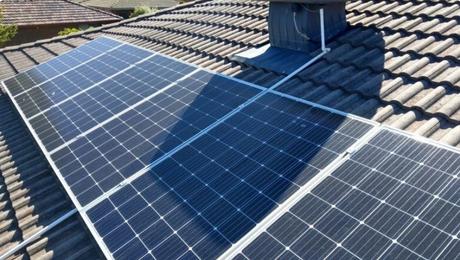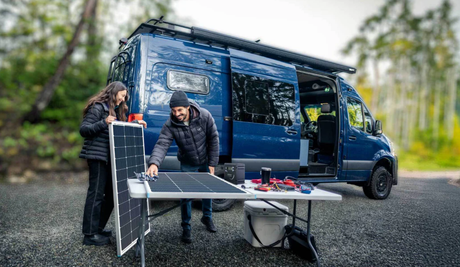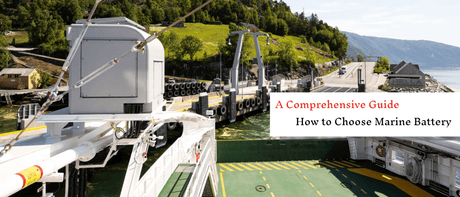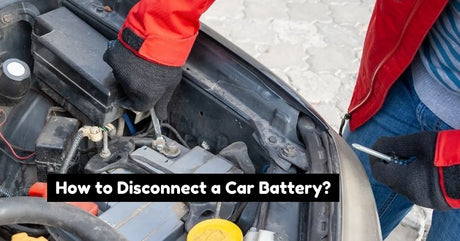Solar power systems are an increasingly popular solution for both off the grid and on the grid power generation. They’re cost-effective and convenient, with solar panel kits widely available for any purpose.
With that being said, you should know that lots of different solar system components go into any system. With so many essential components, it can be helpful to understand why they’re necessary.
What Are the Main Components of Your Solar System?
Remember that you don’t just need to grab one of each of these solar system components and call it a day. You need to make sure they all work together properly. That also means finding dependable, quality brands that you can count on.
Solar Panels?
Of course, solar panels themselves are a big part of your solar electricity system. You can get panels today in a wide range of sizes, providing power in the range of 80 to 300 watts or more per panel.
The number of panels you’re going to need in Canada will vary widely depending on the size of your home and the specific region, due to how much the climate can vary. You could find yourself needing between 7,000 and 15,000 watts of capacity. How can you know how much you need? Find out with our solar panel calculator.
Make sure to go with systems designed for Canada, in particular, when setting up panels to power your home. Efficiency will rely on panel placement, which should always face south for maximum sun exposure. They should also be set up with a tilt of roughly 30 degrees. You can optimize this placement using your exact latitude.
You’ll also have to look into the options for polycrystalline or monocrystalline solar arrays. These are the two main types of panels. Monocrystalline is generally more efficient, although they can be more prone to damage.
Charge Controllers
You can’t simply plug your solar cells into a battery or the grid and hope for the best. You need a charge controller to manage electricity production.
Charge controllers prevent your batteries from taking in too much charge and becoming damaged. There are two different types: maximum power point tracking (MPPT) and pulse width modulation (PWM). Each device provides different levels of control.
The main difference to consider when choosing these solar system components is the voltage. PWM charge controllers require that panel and solar batteries match. MPPT charge controllers require the solar panel operating voltage to be about five volts higher than the battery charging voltage.
You should always check beforehand that your solar system components will work properly together.
Inverters
A primary problem when implementing a solar energy system is that solar panels put out DC power, whereas the electrical grid and your home’s electrical system run on AC power. That means you need to convert from DC to AC. To do that, you need inverters. Systems that aren’t grid-tied typically use a battery-based inverter to keep things simple.
Many solar energy systems will use string inverters. These are designed to run power that’s generated from multiple panels or a single inverter. This arrangement can be even more cost-effective with combiner boxes that connect multiple string inverters.
Running all of the panels in your solar power system can lead to efficiency issues because the weakest link will limit output. Microinverters provide a designated inverter for each panel, preventing this problem. The trade-off is that having more inverters costs more money than simply opting to go with string inverters.
Racks and Mounts
The mounting system that holds your solar panels is fundamental, especially in areas that get heavy snow. You need to make a deliberate choice that factors your region and individual needs.
The most common type of racking is roof-mounted. This keeps all of your solar system components safely out of harm’s way and should give your panels the most unobstructed sunshine possible.
You always want to make sure that a roof-mounted system is properly installed to prevent damage to your roof like leaks.
When roof mounting isn’t possible, some homeowners choose to go with ground mount for their solar electric systems. With this setup, racking is arranged at the appropriate angle to support the panels on the ground. This makes reaching them for cleaning and maintenance easy but can also leave them open to any potential hazards at ground level.
Finding an area without trees or other objects to obstruct ground-level sun exposure can also be hard and in some cases, impossible.
When neither of these options is possible (or for some specific applications), pole-mounted solar panels could be the way to go. These panels are installed on poles, which means that they’ll be high up and get excellent sun exposure but don’t require installation on your roof.
Every situation is unique, so it’s up to you to decide which type of mounting system is suitable for your home and region.
Solar Batteries
It wouldn’t do you much good to only have electricity when the sun is shining at its peak! That’s why batteries are integral solar system components. They give you storage capacity, which means that your solar power system can deliver electricity even after the sun goes down. They’re vital when you want to get the most out of your solar panels.
Your battery bank will be one of the most expensive components of your solar power system, so you need to make sure that you’re getting just what you need. There are two primary choices for solar system batteries: AGM and lithium.
AGM batteries use the same lead-acid chemistry that traditional car batteries do, but with a major upgrade. The absorbed glass mat that gives them their name prevents hydrogen gas release, a major problem for the safety and longevity of traditional lead-acid batteries.
These new batteries provide great storage capacity, safety, and reliability. They’re also relatively inexpensive.
Lithium batteries are also available for solar power systems (think electric vehicles). The main issue is that they’re much more expensive than AGM batteries.
With that being said, in every other category, they pull ahead. Lithium batteries can handle more charge cycles. They’re also safer and easier to maintain, and they last longer than AGM batteries.
Lithium batteries present a significant price trade-off, so both options are still worth considering.
A Backup Power Source for Your Solar Energy System
You should never rely on a solar energy system without having a backup power source available. When damaged or failed solar system components bring down your system, you don’t want to go without electricity until you can repair or replace them. Installing a backup power source ensures that you’ll always have reliable access to electricity.
For many homeowners, their backup power source is simply the existing electrical grid. Grid-tied systems are standard for installing solar energy systems anywhere other than the most remote locations. This arrangement is simple and convenient but isn’t always the right choice for everyone.
If you look at any kind of facility that can’t go without electricity for even a moment, they’ll have standby diesel generators. They’re incredibly reliable, relatively easy to store the fuel for, and less expensive than some other options. However, if your reason for going solar is environmental, you will likely shy away from the idea of a diesel generator.
Depending on your location, you might investigate wind turbines or even water wheels for backup power. However, these two are subject to many conditions. For real emergencies, even the most environmentally conscious families should have a portable gasoline generator to ensure they don’t go without the absolute necessities.
Solar Power System Maintenance
Taking proper care of your solar power system is essential to the system’s longevity and efficiency. You should always think about your solar panel maintenance ahead of time to prevent things from getting out of hand. Luckily, there’s nothing too complicated involved in the upkeep of a solar panel.
Almost anywhere in Canada will get more than enough rainfall to keep panels clean. If you do notice them getting dusty during a particularly dry spell or otherwise covered in debris, you can simply spray your panels down with a household hose.
During the winter, you’ll have to keep them clear of snow for them to work. There are extendable tools designed for this task that make clearing snow a breeze. Whatever you do, never try to defrost panels with hot water. The temperature difference will crack the panels right away.
Learn More About Panels
It’s easy to make sure that you get everything you need and that it’s all compatible and high-quality when you go with solar power components from Renogy.
Our team provides top-of-the-line solar system components for any application and can make sure you’re getting exactly what you want for the best solar experience. Solar panels, batteries, inverters, and more — we’ve got you covered.









